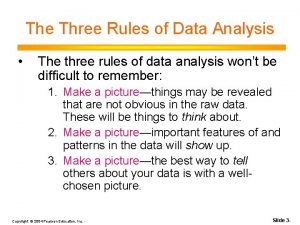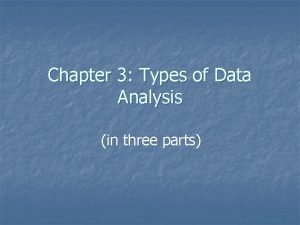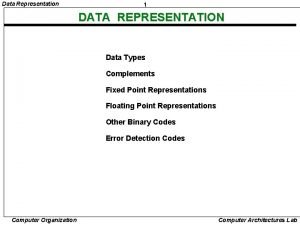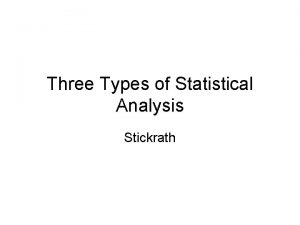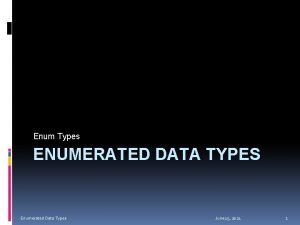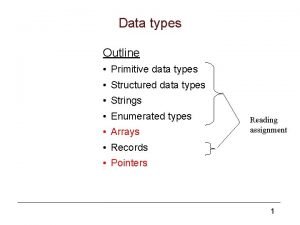Chapter 3 Types of Data Analysis in three










- Slides: 10

Chapter 3: Types of Data Analysis (in three parts)

Part 1 (1) Historical overview (see Fig. 1) (2) Contrastive analysis (a) explanation (b) hierarchy of difficulty (c) problems (3) Error analysis (a) explanation (b) error taxonomy (also in Part 2)

Part 2 (b) error taxonomy (c) mistake vs. error (d) interlanguage (see Fig. 2, 3, 4) (e) fossilization (f) CA vs. EA perspectives on the learner (g) problems (4) Performance analysis (a) definition (b) morpheme studies (c) developmental sequences (also in Part 3)

Part 3 (c) developmental sequences (d) learner strategies (e) acquisition of forms and functions (see Fig. 5, 6) (f) formulaic utterances (g) limitations of PA (5) Discourse analysis (a) definition (b) conversational analysis (c) other applications (d) new areas of investigation (6) Conclusion (a) each type of analysis subsumed the one (s) before it (b) influence of linguistics 1. language acquisition as rule formation 2. emphasis on morphosyntax (c) other possibilities

CA Fig. 1 EA PA DA Development of types of data analysis

● L 1 ● L 2 Fig. 2 Interlanguage continuum as progression from L 1 to L 2

● zero L 2 competence ● high L 2 proficiency Fig. 3 Interlanguage continuum as progression from zero L 2 proficiency to high L 2 proficiency

● zero L 2 competence ● high L 2 proficiency Fig. 4 Interlanguage continuum as progress and regress

function form △ ○ x y Fig. 5 One-to-one mapping z

function form x many-to-one x y one-to-many Fig. 6 Multiple mapping
 Three rules of data analysis
Three rules of data analysis 3 types of data analysis
3 types of data analysis Descriptive mining of complex data objects
Descriptive mining of complex data objects Data types in data representation
Data types in data representation Eck
Eck Complex data types in data mining
Complex data types in data mining Content analysis is a type of secondary data analysis
Content analysis is a type of secondary data analysis Data collection procedures
Data collection procedures Data preparation and basic data analysis
Data preparation and basic data analysis Data acquisition and data analysis
Data acquisition and data analysis Hobbits and orcs problem solution
Hobbits and orcs problem solution
